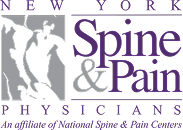Do you find yourself leaning on a shopping cart to relieve pain when grocery shopping? If so, this could be a sign of spinal stenosis. The good news is, there is relief in sight. A new technology is now being used to treat this type of pain. It’s called Vertiflex, and it’s being used by the pain management specialists at the National Spine & Pain Centers.
Vertiflex is the brand name for a spinal stenosis implant that is used for the treatment of moderate lumbar spinal stenosis — or the narrowing of the open spaces within the lower spine. That narrowing means spinal nerves become compressed. That pinching on the nerves of the lower back often causes aching, dull back pain spreading down the buttocks and into the legs, and, lower back.
Contact National Spine & Pain Centers to schedule an appointment with an affiliated pain specialist today.
Symptoms and Causes of Spinal Stenosis
You may feel pain while walking, numbness or tingling in your legs, calves, or buttocks, weakness or loss of balance, or decreased endurance during your everyday activities such as a heavy feeling in your legs. You may get relief when sitting or bending forward or using a cane or walker.
Symptoms develop gradually over time, as the most common cause of lumbar spinal stenosis is aging. Years of wear and tear on the spine take a toll. Other causes include osteoarthritis, curved spine, tumors on the spine, injuries, too much fluoride in the body, or calcium deposits on spinal ligaments. If lumbar spinal stenosis is left untreated, it can worsen over time, leading to excessive narrowing of the spinal canal. This can significantly constrict the nerves that run down the back and into the legs, resulting in increased pain, discomfort, and limited mobility.
Pain management specialists will use imaging technology like X-ray or MRI to properly diagnose this condition. If your doctor determines that you have lumbar spinal stenosis, you maybe eligible to have the minimally invasive, FDA-approved, Vertiflex procedure.
Vertiflex Procedure
During that procedure, the patient lays on their stomach and is given anesthesia. Using fluoroscopic guidance imaging, the surgeon makes a small incision in the lower back to implant a device or spacer between the bones of the spine to lift the pressure off the compressed nerves at the site or sites where there is narrowing. There is no bone removal as there is in a traditional laminectomy (back surgery), and there is less trauma to your muscles and ligaments, less blood loss, and reduced risk of infection. Doctors also prefer this method because it allows spinal motion, unlike a fusion surgery that can limit movement.
Typically, this procedure takes 30 to 45 minutes, depending on whether one or two spacers are implanted. After the procedure, there will be some soreness. The incision site will have a few stitches or staples, and you will have a follow-up appointment within a week or two. You can expect activity limitation for about six weeks after the procedure. That means you’ll have to limit all lifting, bending, twisting, and strenuous activity, including lifting anything over 10 pounds or sports participation. You will be able to do some light activity, like walking, as tolerated.
Studies show the Vertiflex procedure is clinically proven for effective, long-term relief from the pain associated with lumbar spinal stenosis. It is a simple and safe, minimally invasive treatment. The goal is to give those with lumbar spinal stenosis the ability to enjoy normal activities again with less pain and improved physical function.
National Spine & Pain Centers
If you think you may be a candidate for the Vertiflex procedure, make an appointment today with an affiliated board-certified pain management specialist from the National Spine & Pain Centers and get back to your regular activities, with significantly less pain.




.2508191744197.jpg)
.2503201349082.jpg)
